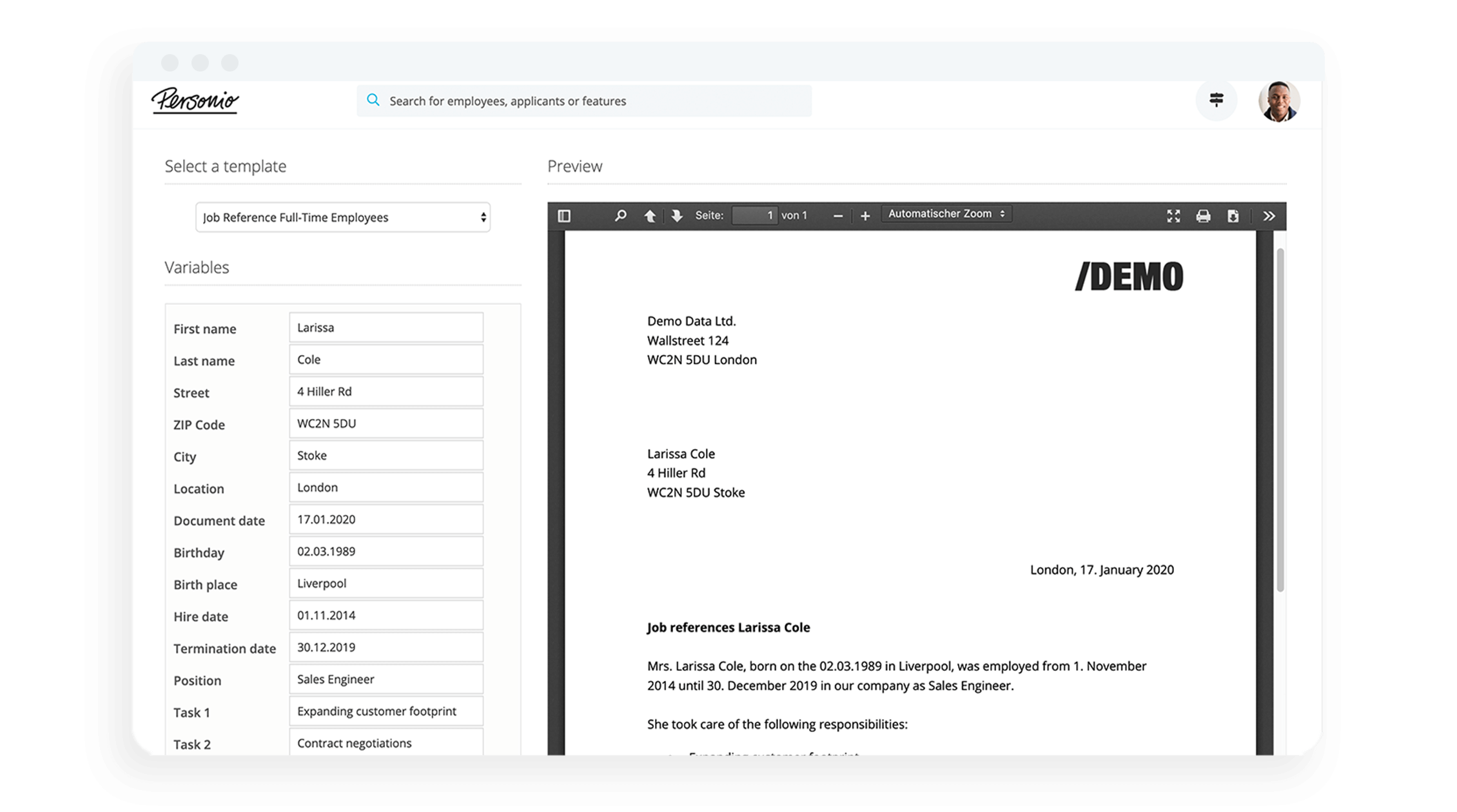The Organisational Guide to Time In Lieu (TOIL)

What is time off in lieu (TOIL) and why does it matter? This article runs through everything you need to know about TOIL including what it is, what UK law says about it, and how to keep on top of it.
What is TOIL (Time Off in Lieu)?
Time off in lieu, otherwise known as time in lieu or TOIL, is when an employer offers time off to workers who have gone above and beyond their contracted hours. Essentially, it serves as an alternative to pay, meaning that any overtime hours worked by an employee can be taken as part of their annual leave.
What Is A Lieu Day Or A Day In Lieu?
In the event that an employee works during a public holiday, a day in lieu is typically given. This is also commonly referred to as an ‘alternative holiday,' as the employee is made whole by receiving a day off for the day they would not have been otherwise expected to work. A lieu day, in this case, is a well-deserved day off for employees.
What Does UK Law Say About TOIL?
The way TOIL is handled is a bit different.As we cover in our HR Lexicon article on employment law, almost all workers are legally entitled to 5.6 weeks of paid holiday a year (this is also known as statutory leave). According to gov.uk "Some employers give you time off instead of paying for overtime, known as time off in lieu".
If they do, NIDirect says that employers and employees need to agree to the time when individuals take TOIL. In general, it is normally at a time that suits the employer.
Can Employees Be Paid In Lieu of Taking Holiday?
When an employee has earned TOIL by doing overtime, it’s up to the employer and employee to agree when they can take that time off. However, UK law specifically requires employees to take all the annual holiday leave they are entitled to.
How Do You Track TOIL?
This is where attendance tracking becomes massively important. The good news is that it’s possible to implement processes that ensure attendance tracking is as easy as possible for everybody and working hours are calculated correctly. You can find out more about this in this article about overtime calculators.
Looking for more useful templates? Simply click this link to find our full library.
Keep Your Employee Files Accurate, Always

Ensure all employee files are always up-to-date, organised, complete and data-compliant.
Get the checklist(In a hurry? Scroll to the end of this article to get a helpful email template for employees to use when they request TOIL from their managers).
What Are The Benefits Of A TOIL Policy?
Employees need to take time off. It’s not just a legal requirement, it’s also good for their mental health.Regardless of what your working time hours policies and contracts say, the fact is that employees who have a better work-life balance are more fulfilled – both personally and professionally.
The Research on Taking Time Off
As we cover in this article on how you can help employees find a better work-life balance, research published in the International Journal of Environmental Research and Public Health in 2019 indicated that long working hours make people very sick.
They found it increased the risks of cardiovascular diseases, chronic fatigue, stress, depression, and anxiety. It also reduces sleep quality and increases ‘all-cause mortality,’ alcohol use, and smoking.
In addition, research reported by the Harvard Medical School revealed that working more than 55 hours a week raises the risk of heart attacks and strokes. In addition, according to an article published in The Atlantic, “long work hours affect romantic relationships, too.”
TOIL Can Be Better For Business
Giving people enough time off – especially if they have worked long hours to get a specific job done – is an important part of a proper talent management strategy. Especially one that aims to attract, develop, motivate, and retain high-performing employees.
The benefits of taking time off include:
TOIL Benefit | Why It Matters |
|---|---|
Wellness | Helping employees feel rested and recharged. |
Motivation | Becoming more motivated after a break. |
Performance | Improving productivity and creativity. |
Accidents | Becoming less prone to potential accidents/mistakes. |
Stress | Decreasing employee stress, overall. |
Illness | Potentially less absences taken due to illness. |
Are people taking time off, though? Sadly, no. During the Covid-19 era, it might seem that taking annual leave is a bit pointless. But, as BDaily News points out, “it’s vital employees take a proper break to ensure they receive the recuperative benefits of taking time off work.”
It’s logical: people come back from holiday feeling significantly less stressed.
Yet, despite this, many people are not booking time off for holidays. Personnel Today reported that two in five UK employees (40%) took a maximum of just half of their annual leave entitlement during the past holiday year, according to the results of a survey by Glassdoor – and that was back in 2018!
With the lack of incentive to take holiday, it’s not hard to imagine that the amount of untaken leave is massively adding up – and so are the hours of overtime being worked.
TOIL & Contracts
Since it’s up to each company to agree to its policy on taking time off in lieu, it’s really important to make sure that employee contracts cover this important and potentially challenging issue.
Good contracts should include the following information about TOIL:
Whether employees are given time off instead of being paid for overtime
Detailed rules on how your TOIL scheme works, including:
Minimum amounts of time that can be worked which accrue TOIL
How much can be accrued each month
When TOIL has to be taken (and what will happen if it isn’t – typically it is discarded or ‘lost’ if not taken soon enough)
How to keep records of time worked
What happens to TOIL that has been accrued when a contract is terminated.
Accelerate HR Tasks With Templates

Save time for high-impact, strategic work. Streamline every project with easy-to-use HR templates from Personio.
See our HR templatesThree Key Best Practices For Managing TOIL
While keeping track of TOIL is important, accurate time tracking should remain seamless! Here is how Personio can help HR managers cope with the tricky topic of time off in lieu and how to manage it…
1. Managing Each Absence Type
By categorizing your absence types in different ways, and keeping them all in one place, your organization can have a complete handle on where absences are occurring and why they are occurring. You can even generate reports to reflect on absence trends, including TOIL, to update your working practices.
2. All Working Hours at a Glance
Regardless of whether your employees track their time automatically with an app, on a computer, or via a linked system – with Personio, all working hours are recorded centrally. This ensures that HR managers (and employees) always have an overview of all hours worked, for reporting and analysis, as well as to make sure employees are taking the time off in lieu that they have earned.
3. Processing Leave Requests in a Flash
You can save your company up to 80% of the time it takes to process leave requests conventionally: Simply have employees request leave and other types of absences online and get managers to approve requests with the click of a button.
Time Off In Lieu Agreement Template
That’s the end of our article on taking time off in lieu. Now, all that remains is to share a helpful email template that you might want to use to help formalize and track when employees are taking TOIL.
Of course, if you’re using an automated system like Personio to track it for you, it’s much easier. But, until your company is ready to use an automated online HR document tracking and management system, this will help:
Hi [Manager Name],
As you can see from our systems [insert hyperlink or details of where to find the authorized and agreed records of time worked], I have earned X [insert number] hours of time off in lieu (TOIL).
We have agreed / my contract states [delete inappropriate statement] that TOIL can be taken [insert conditions e.g. with one week’s notice], therefore I would like to take Y [insert number of hours of TOIL to be taken] of those hours on these dates [insert dates].
This will [select option]:
extend the annual leave I will be taking
be taken on its own.
If you agree, I will be away from [insert hour and day] until [insert hour and day].
After taking this time off I will still have Z [insert number] hours of TOIL earned to be taken at a later date.
Thank you for your prompt approval of this leave.
Many thanks
[Employee Name]
Meet The People Operating System
WATCH: Get to know Personio in three minutes

We need your consent to load this service!
This content is not permitted to load due to trackers that are not disclosed to the visitor.
Personio is an all-in-one HR software designed for every stage of the employee life cycle.
Using Personio, you can manage all your most important HR processes from one place. Recruit, manage, develop and pay your employees from one centralised HRIS.
For HR professionals, you can unlock new levels of productivity and influence. Become the HR business partner that your business needs, by getting back time for what matters: your people.
For line managers, Personio seamlessly builds automated performance cycles, tracks vacation days and keeps employee information up-to-date (and in a compliant fashion).
For employees, no more fussing with cumbersome tools and processes. Employees can request days off, change their information and keep track of goals and more. All from one place.
Speak with an expert today about your HR needs and how Personio can meet them. Or, give Personio a spin for yourself by starting your very own free trial right now. It’s all yours for 14 days.
